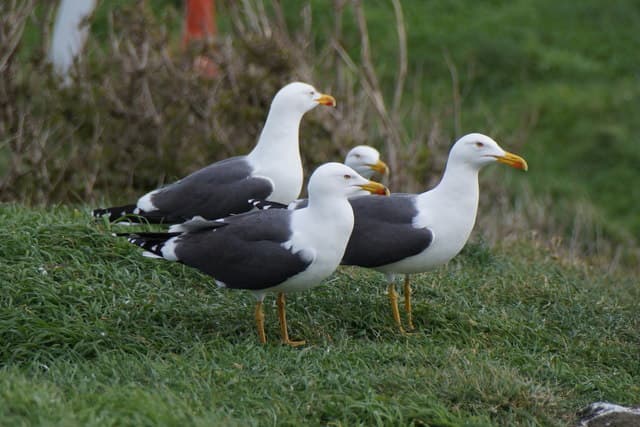When it comes to gull species (នាងនួន), many people know the ones from the sea that always snatch people’s food. There is more to them than just that as they are very adaptable and intelligent bird species. While being a small country, Cambodia is also home to 5 gull species that some of us don’t even know. And I am being honest, I don’t even know the local name of gulls. Now that I know we have 5 gull species, we are going to learn about each of them below.
Black-Headed Gull (នាងនួនជាយស្លាបស)
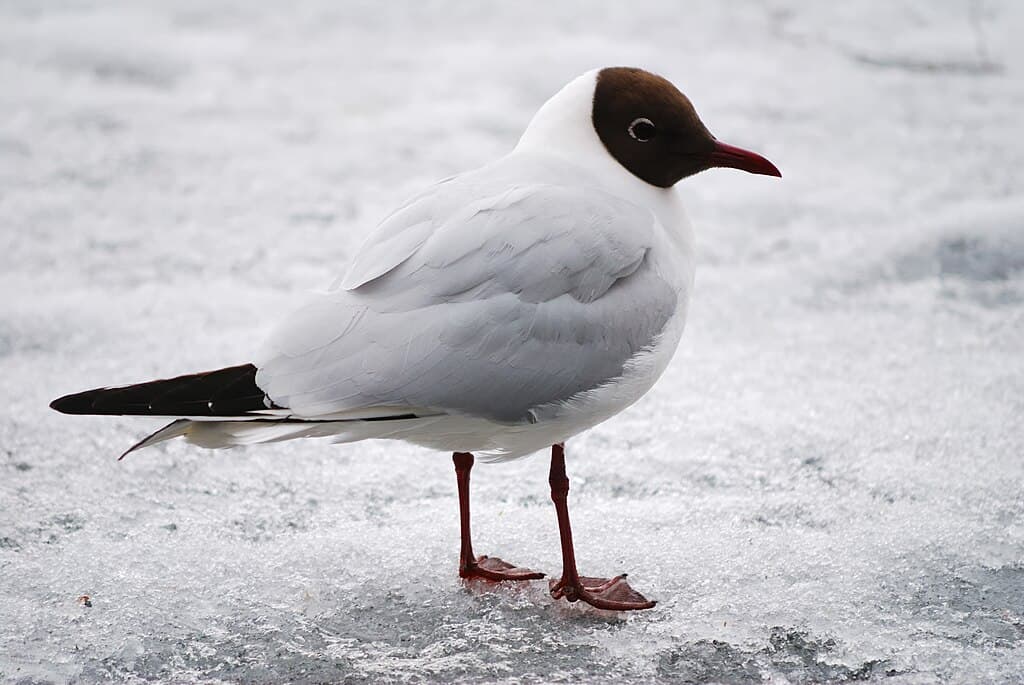
Black-headed gulls are medium-sized birds that measure to about 37 to 44 centimeters with a wingspan of 94 to 110 centimeters. The colorations of these birds change in different seasons but both sexes have the same plumage color. Despite the name, this bird does not have a black head at all though it might look so from a distance. In summer, adults have a chocolate-brown head, pale gray body, black tips to the primary wing feathers, red bills, and red legs. When winter comes, the head will become white with two dark spots on the sides.
Just like any other gulls, this one also breeds in colonies and they are highly gregarious in winter. They nest on the ground, and their common habitats are farmlands, islands, lakes, reed beds, salt marshes, and wetlands. Being opportunistic feeders, this gull species feeds on carrion, fish, insects, scraps, seeds, and worms. They search for food either while swimming or walking, and they can also swoop down to take items from the surface while flying. At the same time, they also steal food from other birds as well.
Black-Tailed Gull (នាងនួនកន្ទុយខ្មៅ)

This is one of the most common gull species that you often see, and they are easy to recognize as well. A black-tailed gull is around 46 centimeters long, and its yellow bill has a red and black spot on the tip. It has yellow legs, and just like the name suggests, it has a black tail. Both males and females have the same plumage and features but males are larger than females.
Black-tailed gulls are common in East Asia with some range across Southeast Asia as well as North America. These gulls breed in dense colonies established on rocky coastal cliffs, rocky islets, rocky shorelines, and sandy areas. When the breeding season is over, they go back to offshore. In where they live, they feed on various meals such as carrion, crustaceans, mollusks, and small fish. For the ones that are close to the sea, they follow commercial fishing fleets and ships to steal fish. More than that, these gulls also steal food from other seabirds as well; they will do anything to get food.
Brown-Headed Gull (នាងនួនក្បាលត្នោត)
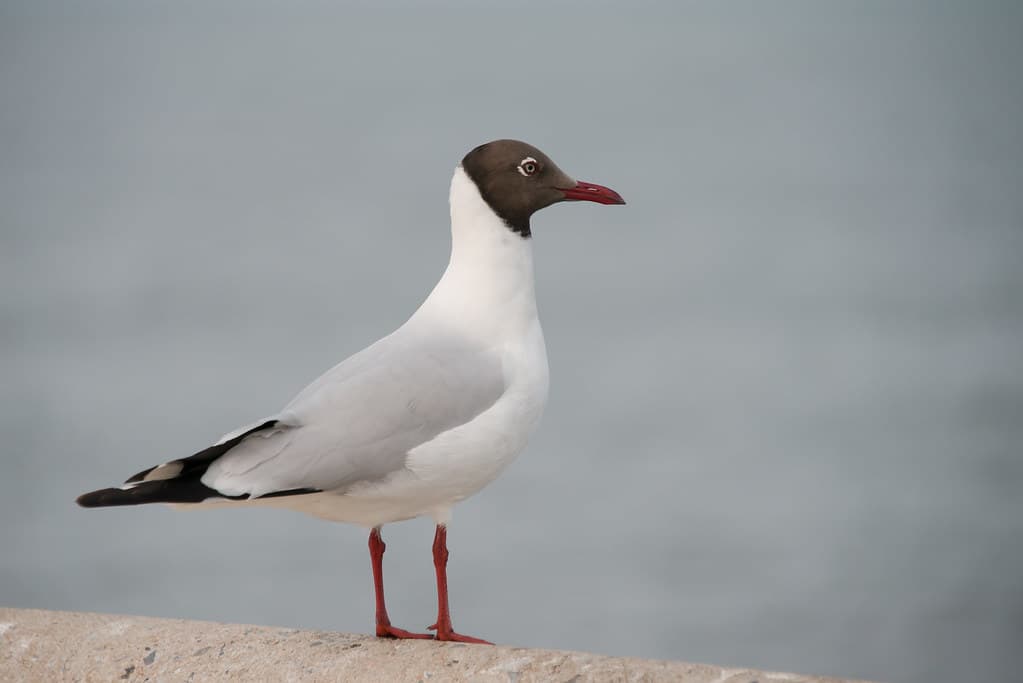
Looking very similar to the black-headed gull but slightly larger, it is common to mistake them for one another. A summer brown-headed gull has a pale brown head, pale gray body, red bills, and red legs. When winter approaches, their brown hood is lost and they only have dark vertical streaks. Brown hoods only exist in adults, younger gulls have a less homogeneous brown hood. Their upperparts are pale gray while the underparts are white, and the primary feathers have black tips.
Just like other gull species on the list, this one also breeds in colonies in large marshes or reed beds. Their common habitats are coasts, lakes, and rivers where they feed on fish, insects, offal, reptiles, rodents, shrimps, and worms. Being both gregarious and noisy, these birds are loud both when feeding and roosting. Speaking of feeding, brown-headed gulls either hunt or steal to make a living; and they scavenge sometimes too. They are capable of catching flying and surface insects but also rob fish from terns and scavenge fish waste from humans.
Lesser Black-Backed Gull (នាងនួនធំខ្នងខ្មៅ)
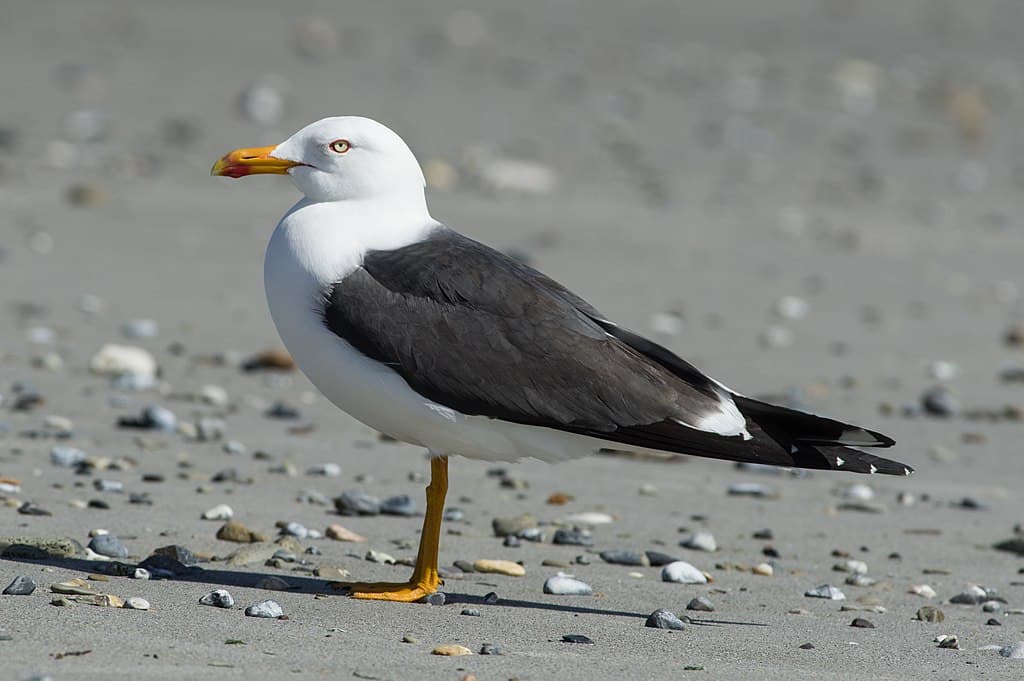
This gull species is quite large yet slimmer, measuring 52 to 64 centimeters from head to tail. A lesser black-backed gull has a dark gray to black back and wings with yellow bill and legs. The rest of the plumage is white, and adult heads are pure white in the summer and streaked in the winter. Young lesser black-backed gulls have scaly black-brown upperparts and a neat wing pattern, and they take 4 years to reach maturity.
The habitats of these gulls are bays, beaches, coasts, farmlands, garbage dumps, grasslands, intertidal, marine, suburban, urban, and wetlands. As both omnivores and scavengers, this gull species feeds on a wide variety of food. They feed on various things such as fish from the sea, insects in flight, and rubbish from landsite sites. More than that, they even consume food from other birds, waste from fisheries, and young birds. Crustaceans, marine worms, rodents as well as berries, seaweed, and seeds are also on the menu.
Slender-Billed Gull (នាងនួនចំពុះស្តើង)
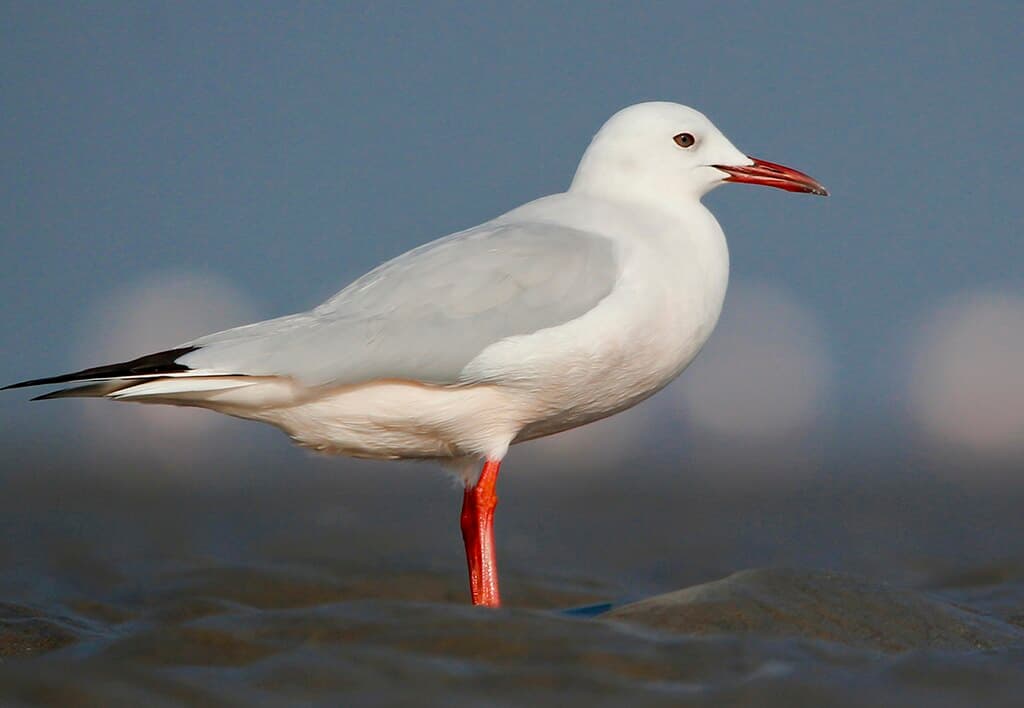
While most gull species have dark colorations on their backs, heads, and wings, this one doesn’t. Growing up to 37 to 40 centimeters, a slender-billed gull has a pale gray body, white head, and white breast. However, they have a black tail and the color fades to darker gray to the primary wing feathers. Their legs are dark red and their breast has a faint pink coloration in summer. A slender-billed gull has a longer neck than most gulls, and the lack of a dark hood makes it look even more different. As for their bills, they are dark red and thick which helps them to feed on prey in the mud.
The distribution of these birds is quite wide, ranging across Central Asia, East Asia, Mediterranean region, Middle East, and Southeast Asia. Their common habitats are brackish water lakes, coastal freshwater lakes, estuaries, marine lagoons, marshes, sea cliffs, shorelines, and swamps. They also live in artificial ecosystems including brackish water ponds, coastal freshwater fish culture ponds, marine aquaculture ponds, and salt pan reservoirs. About 50% of slender-billed gulls’ diet is fish, and they hunt by diving into the water when they spot suitable prey. For meals in the mud, they probe in the mud with their beaks to feed on marine invertebrates. These birds also catch insects in flights as well.
Related Post: Tern Species In Cambodia
